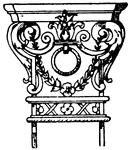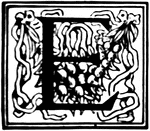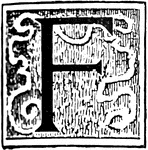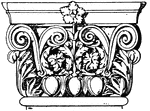
Roman-Corinthian Pilaster Capital
The Roman-Corinthian pilaster capital has an egg-and-dart moulding that runs along the bottom, then…

Roman-Corinthian Pilaster Capital
The Roman-Corinthian pilaster capital has an egg-and-dart moulding that runs along the bottom, then…

Roman-Corinthian Pilaster Capital
The Roman-Corinthian pilaster capital has a leaf and floral design, then it volutes with a spiral scroll…
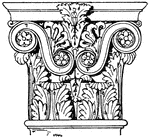
Roman-Corinthian Pilaster Capital
The Roman-Corinthian pilaster capital has a leaf and floral design, then it volutes with a spiral scroll…
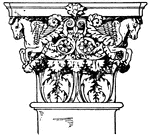
Roman-Corinthian Pilaster Capital
The Roman-Corinthian pilaster capital has a leaf and floral design, then it volutes with a spiral scroll…
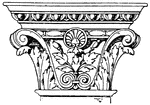
Corinthian Pilaster Capital
The Corinthian pilaster capital is an Italian Renaissance design. This pilaster is broader in proportion…
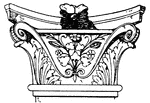
Corinthian Pilaster Capital
The Corinthian pilaster capital is an Italian Renaissance design. This pilaster is broader in proportion…
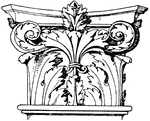
Corinthian Pilaster Capital
The Corinthian pilaster capital is an Italian Renaissance design. This pilaster is broader in proportion…
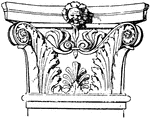
Corinthian Pilaster Capital
The Corinthian pilaster capital is an Italian Renaissance design. This pilaster is broader in proportion…
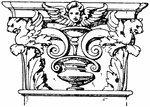
Corinthian Pilaster Capital
The Corinthian pilaster capital is an Italian Renaissance design. This pilaster is broader in proportion…
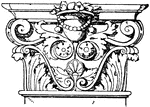
Corinthian Pilaster Capital
The Corinthian pilaster capital is an Italian Renaissance design. This pilaster is broader in proportion…
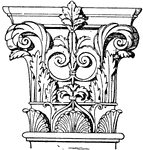
Corinthian Pilaster Capital
The Corinthian pilaster capital is an Italian Renaissance design. This pilaster is broader in proportion…
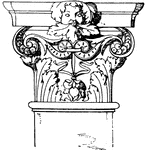
Corinthian Pilaster Capital
The Corinthian pilaster capital is a French Renaissance design found at the tomb of Louis XII in St.…
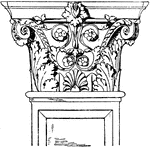
Corinthian Pilaster Capital
The Corinthian pilaster capital is an Italian Renaissance design found in the portal of San Michele…

Corinthian Pilaster Capital
The Corinthian pilaster capital is an Italian Renaissance design found in the Palace of the Doges in…

Corinthian Pilaster Capital
The Corinthian pilaster capital is an Italian Renaissance design found in the Palace of the Doges in…

Ionic Pilaster Capital
The Ionic pilaster capital is a French Renaissance design. This pilaster is broader in proportion to…
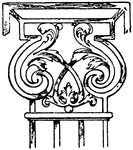
Wrought-Iron Pilaster Capital
This wrought-iron pilaster capital is a 17th century design found in the castle of Athis-Mons, Paris,…
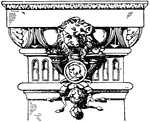
Modern Doric Pilaster Capital
The modern Doric pilaster capital has an egg-and-dart design on the top with a lion's head in the center.
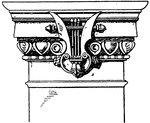
Modern Doric Pilaster Capital
This modern Doric pilaster capital is found in the new Opera House in Paris, France. It has an egg-and-dart…
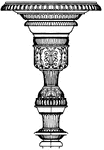
Antique Candelabrum Capital
The Antique candelabrum capital has a plate or cup like form on the top where a lamp or candle can be…
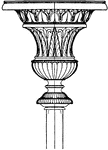
Antique Candelabrum Capital
The Antique candelabrum capital has a plate or cup like form on the top where a lamp or candle can be…
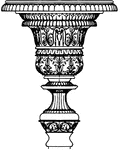
Antique Candelabrum Capital
The Antique candelabrum capital has a plate or cup like form on the top where a lamp or candle can be…
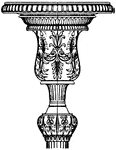
Antique Candelabrum Capital
The Antique candelabrum capital has a plate or cup like form on the top where a lamp or candle can be…
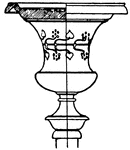
Antique Candelabrum Capital
The Antique candelabrum capital has a plate or cup like form on the top where a lamp or candle can be…

Antique Candelabrum Capital
The Antique candelabrum capital has a plate or cup like form on the top where a lamp or candle can be…
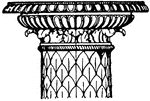
Roman Candelabrum Capital
The Roman candelabrum capital is made out of marble and terminates with a plate or table on top.
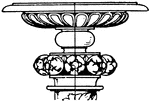
Renaissance Candelabrum Capital
The Renaissance candelabrum capital is made out of marble and terminates with a plate or table on top.…
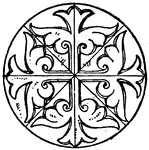
Byzantine Circular Panel
The Byzantine circular panel is a 6th century design found in Hagia Sophia of the former imperial Ottoman…
Lotus Capital
An illustration of a lotus decorated capital. In several traditions of architecture including Classical…
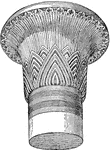
Papyrus Capital
An illustration of a papyrus decorated capital. In several traditions of architecture including Classical…
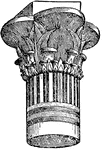
Lotus Capital
An illustration of a lotus decorated capital. In several traditions of architecture including Classical…

Persian Capital
An illustration of a Persian capital. In several traditions of architecture including Classical architecture,…
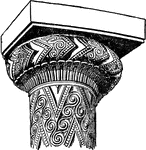
Early Greek Capital
An illustration of an early Greek capital. In several traditions of architecture including Classical…
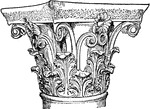
Corinthian Capital
An illustration of a Corithian capital from the Tholos of Epidaurus. In several traditions of architecture…
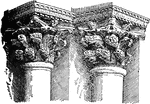
Byzantine Capitals
An illustration of a Byzantine capital from the central portal of St. Mark's Venice. In several traditions…
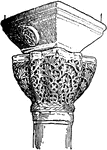
Byzantine Capitals
An illustration of a Byzantine capital from the the Church of St. Vitale, Ravenna. In several traditions…
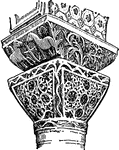
Byzantine Capitals
An illustration of a Byzantine capital from the the Church of St. Vitale, Ravenna. In several traditions…

Cushion Capitals
An illustration of a cushion capital. In several traditions of architecture including Classical architecture,…
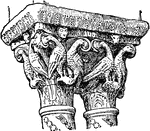
Romanesque Capitals
An illustration of a Romanesque capitals from the cloister of Monreale near Palermo, Sicily. In several…

Gothic Capitals
An illustration of a Gothic capitals from Wells Cathedral. In several traditions of architecture including…
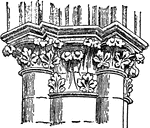
Gothic Capitals
An illustration of a Gothic capitals from from Amiens Cathedral. In several traditions of architecture…
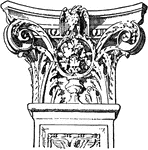
Italian Renaissance Capitals
An illustration of Italian Renaissance capital from St. Maria dei Miracoli, Venice. In several traditions…

Echinus Molding
"A Capital of the Parthenon. - E, Echinus. In architecture, the convex projecting molding of eccentric…

Decorative Floral V
An ornate capital V surrounded by leaves and vines, used at the start of a new chapter or heading.
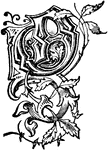
Decorative Floral O
An ornate capital O surrounded by leaves and vines, used at the start of a new chapter or heading.
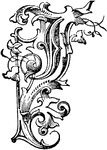
Decorative Floral J
An ornate capital J surrounded by leaves and vines, used at the start of a new chapter or heading.
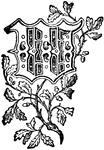
Decorative Floral W
An ornate capital W surrounded by leaves and vines, used at the start of a new chapter or heading.
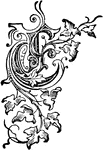
Decorative Floral E
An ornate capital E surrounded by leaves and vines, used at the start of a new chapter or heading.
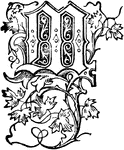
Decorative Floral M
An ornate capital M surrounded by leaves and vines, used at the start of a new chapter or heading.

Decorative Floral A
An ornate capital A surrounded by leaves and vines, used at the start of a new chapter or heading.

Decorative Floral D
An ornate capital D surrounded by leaves and vines, used at the start of a new chapter or heading.
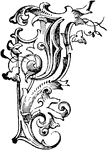
Decorative Floral I
An ornate capital I surrounded by leaves and vines, used at the start of a new chapter or heading.

Decorative Floral T
An ornate capital T surrounded by leaves and vines, used at the start of a new chapter or heading.

Decorative Floral B
An ornate capital B surrounded by leaves and vines, used at the start of a new chapter or heading.
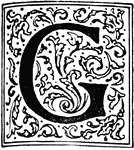
G, Ornamental Letter
Capital G decorated with scrollwork used to begin text in a book or as a letterhead.
